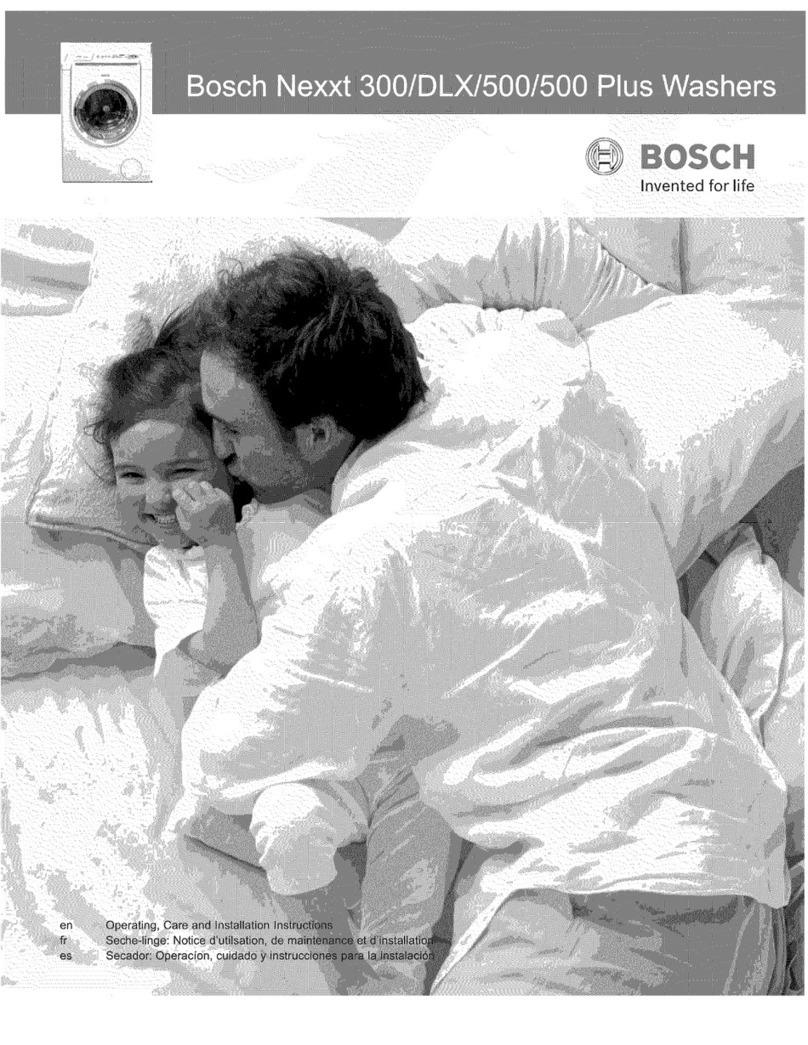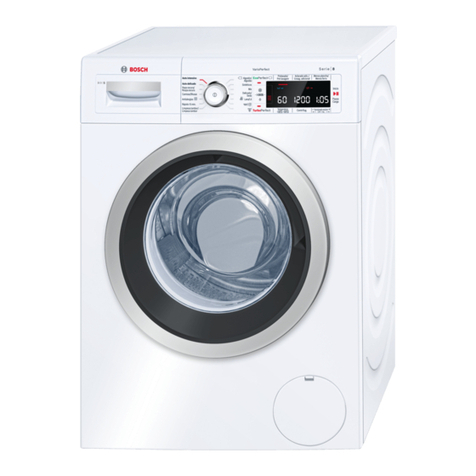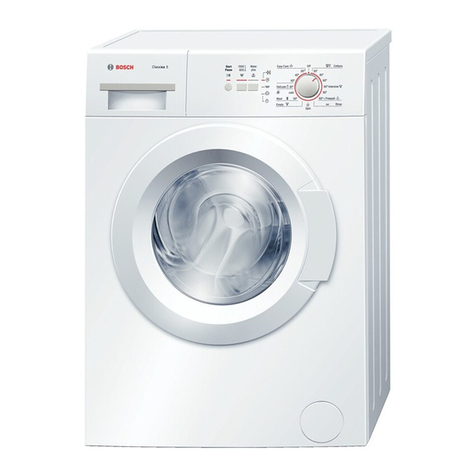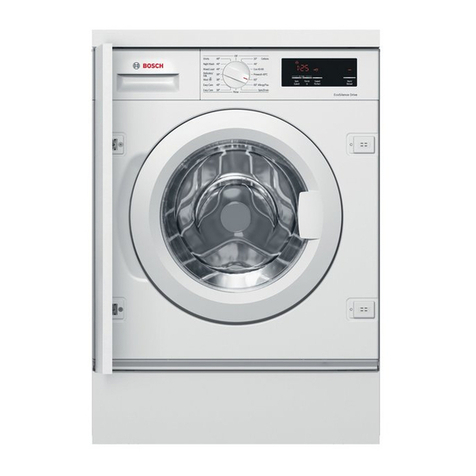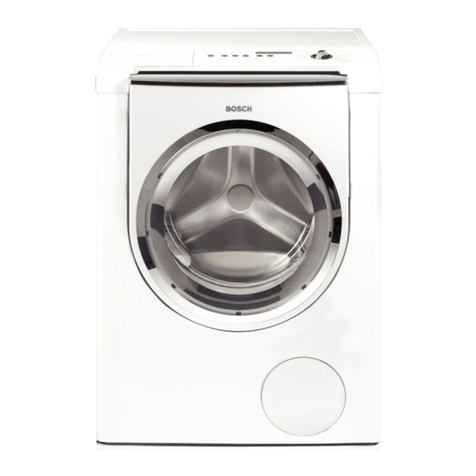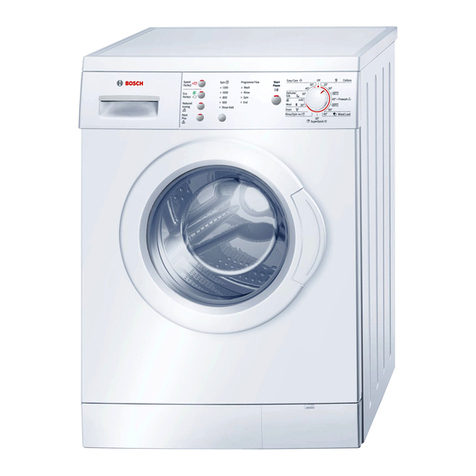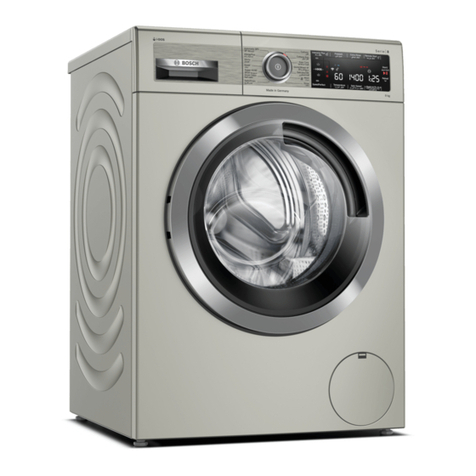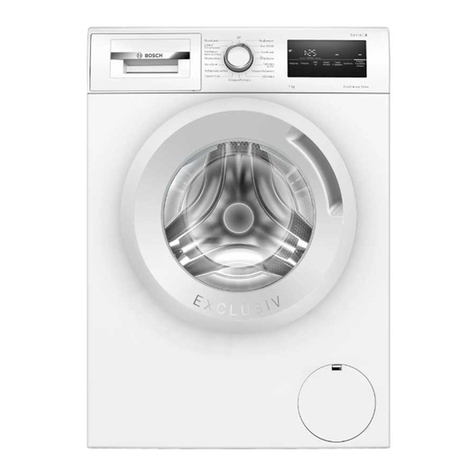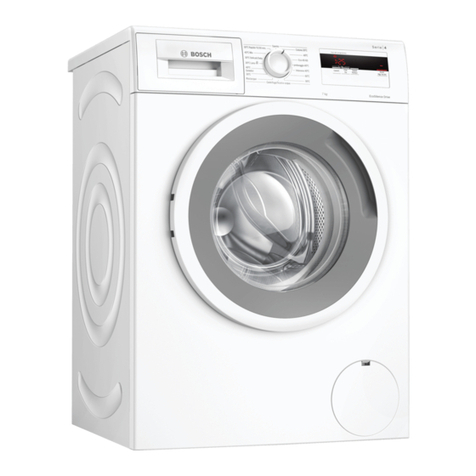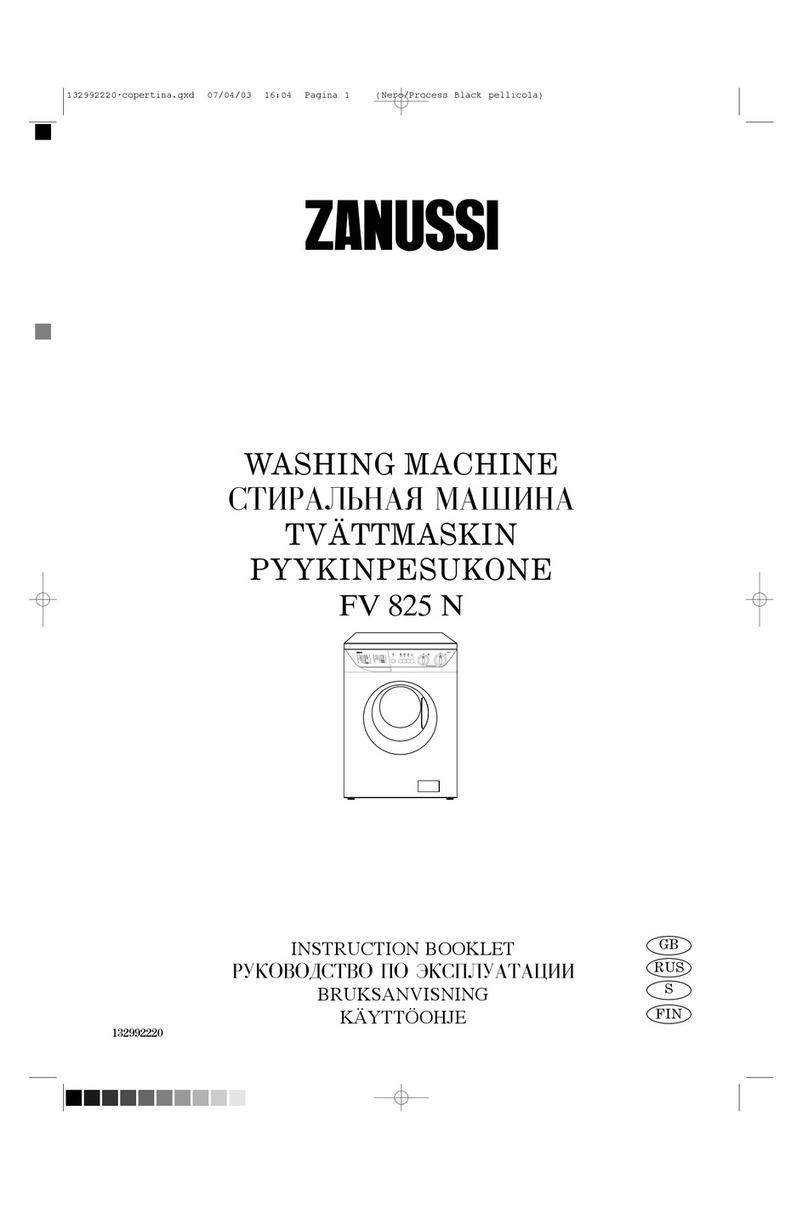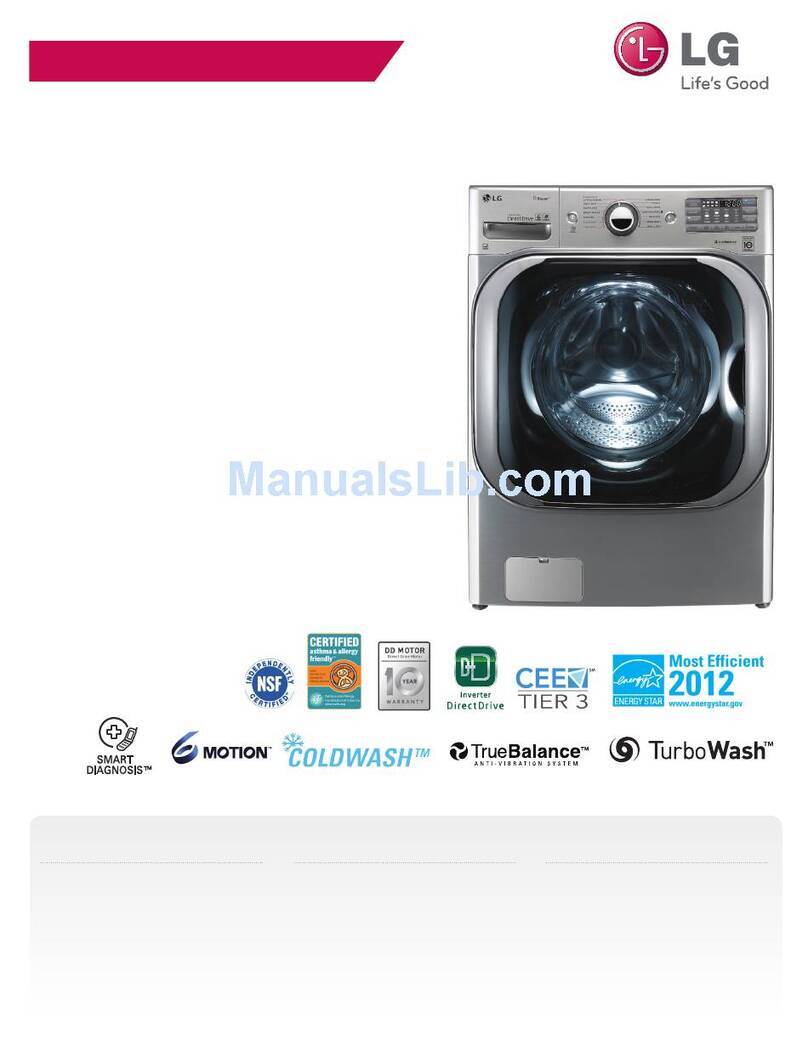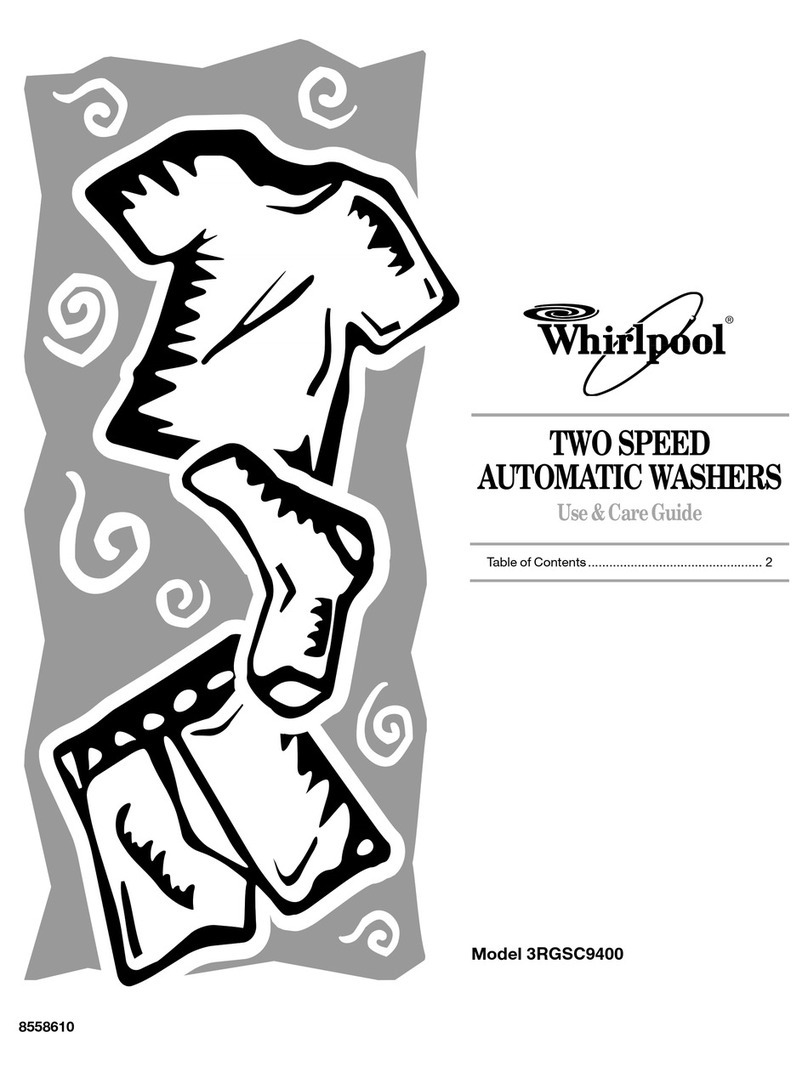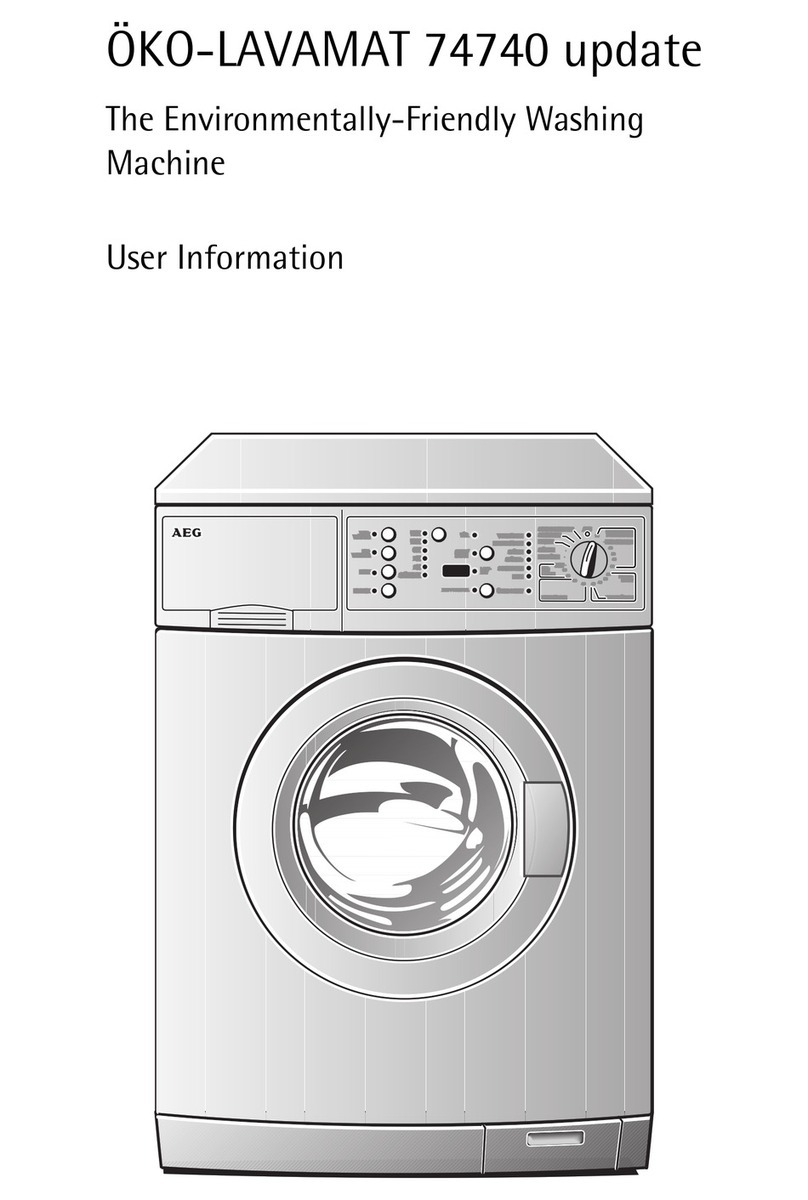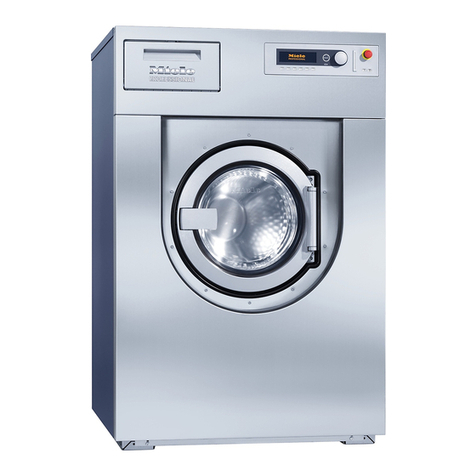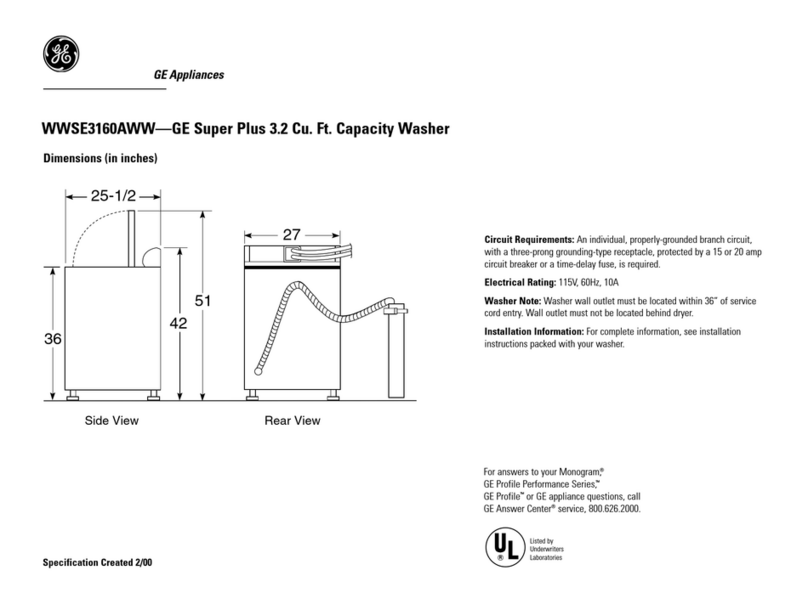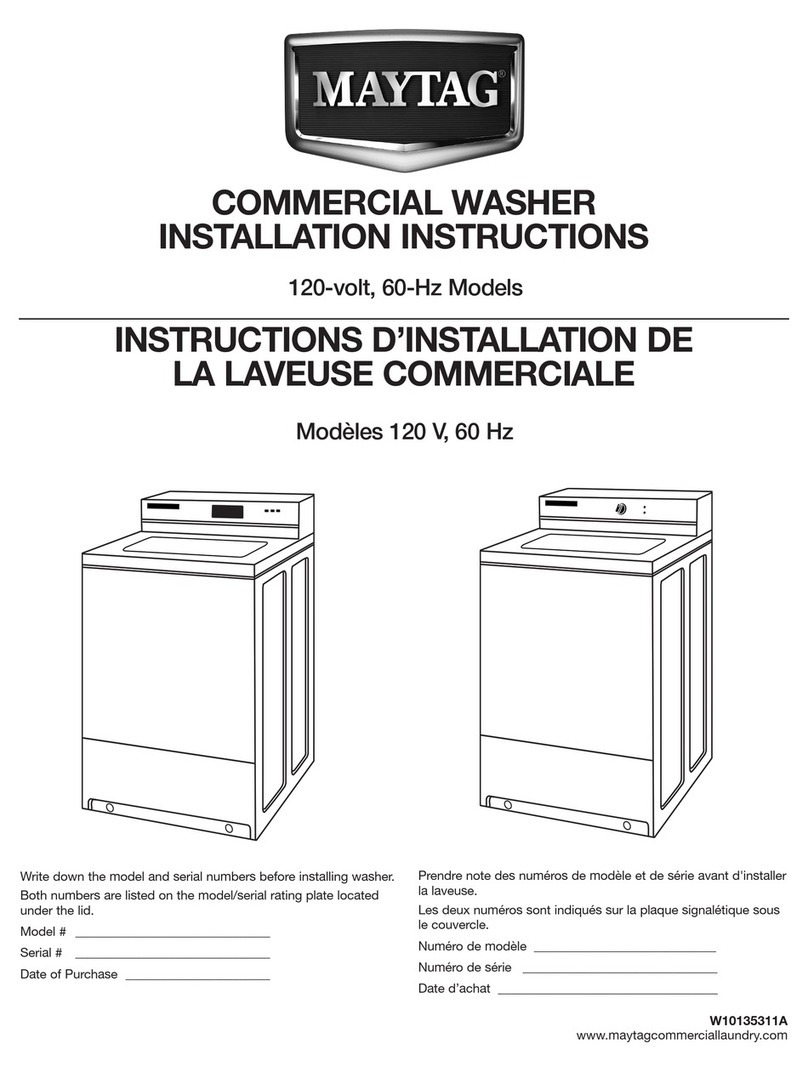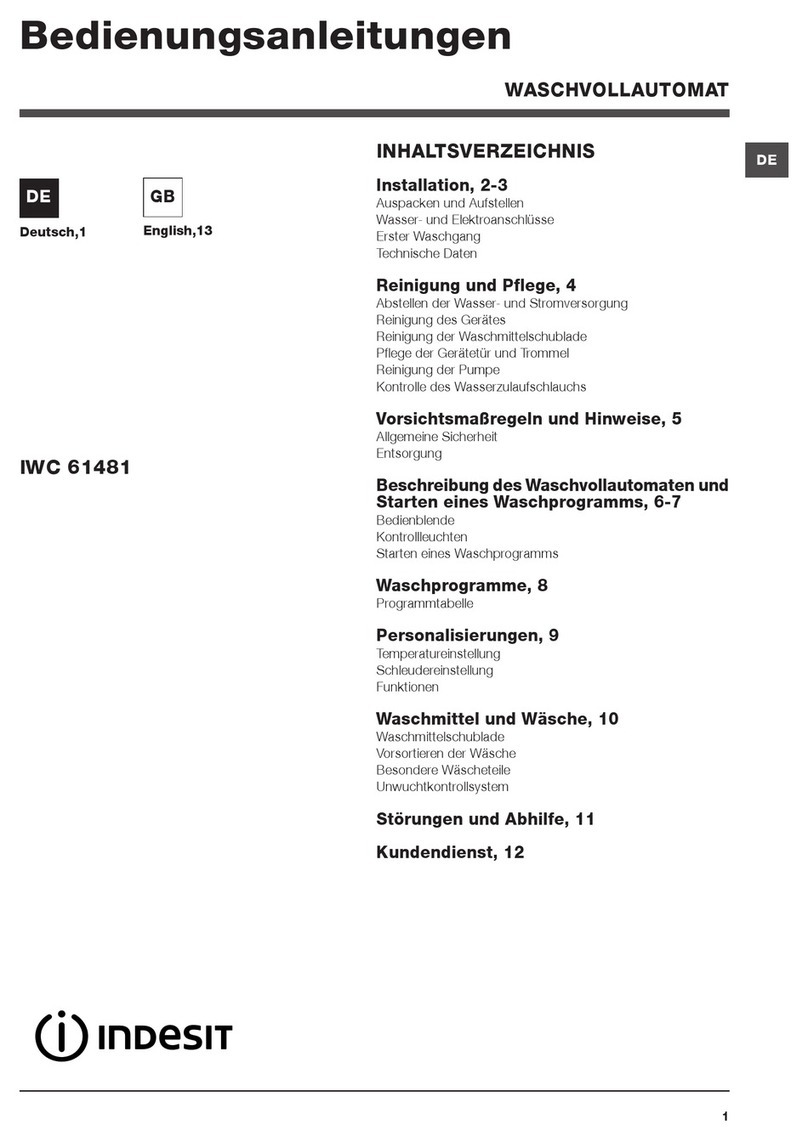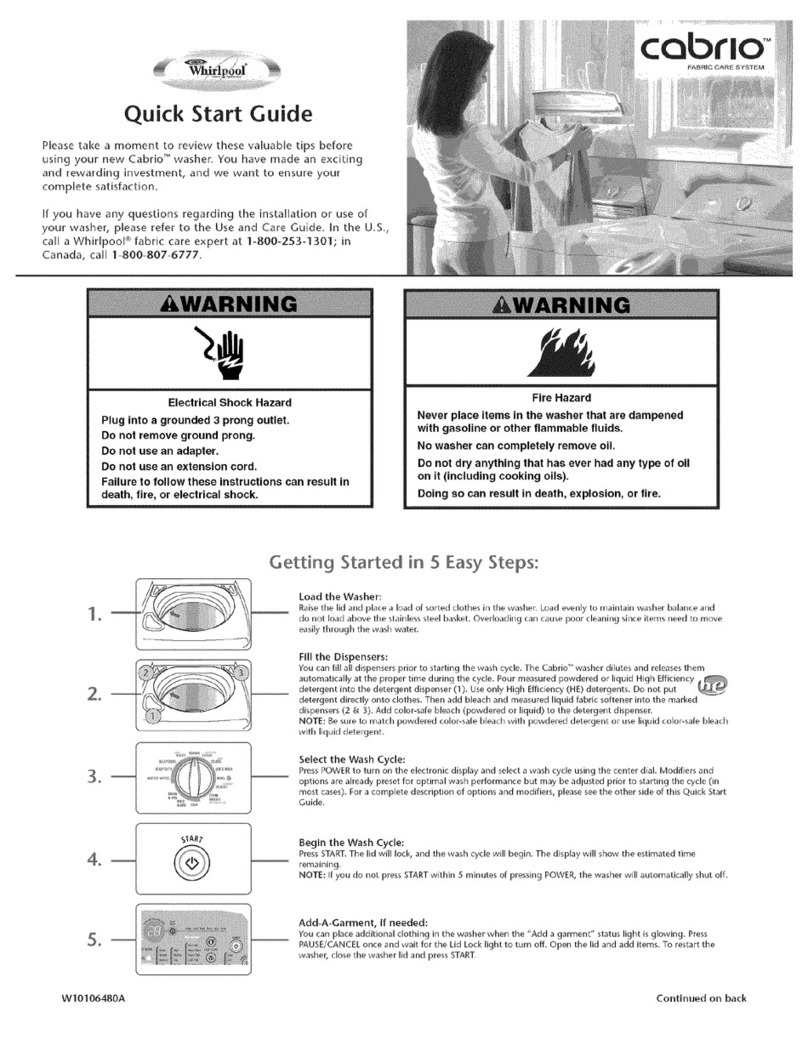
Preventing material damage en
5
WARNING‒Risk of injury!
The use of non-original spare parts and non-
original accessories is dangerous.
▶Only use the manufacturer's original spare
parts and original accessories.
WARNING‒Risk of poisoning!
Poisonous fumes may be given off if you use
cleaning agents that contain solvents.
▶Do not use cleaning agents that contain
solvents.
2 Preventing material damage
ATTENTION!
The functionality of the appliance may be impaired if
you use the wrong quantity of fabric softener, deter-
gent, care product or cleaning agent.
▶Follow the dosage recommendations from the man-
ufacturer.
Exceeding the maximum load capacity impairs the
function of the appliance.
▶Observe the maximum load capacity for each pro-
gramme and do not exceed it.
→"Programmes", Page000
The appliance is secured for transportation using
transit bolts. Transit bolts which have not been re-
moved may result in material damage and damage to
the appliance.
▶Before starting up the appliance, remove the transit
bolts completely and keep them in a safe place.
▶Before transport, fit the transit bolts fully in order to
prevent damage in transit.
Material damage may be caused if the water inlet hose
is connected incorrectly.
▶Tighten the screw connections on the water inlet un-
til they are hand-tight.
▶Connect the water inlet hose directly to the water
tap, without any additional connecting elements
such as adapters, extensions or valves.
▶Make sure that the valve housing for the water inlet
hose does not come into contact with its surround-
ings and is not subjected to any external forces.
▶Ensure that the inner diameter of the water tap is at
least 17mm.
▶Make sure that the length of the thread on the con-
nection to the water tap is at least 10mm.
If the water pressure is too high or too low, the appli-
ance may not be able to operate properly.
▶Ensure that the water pressure in the water supply
system is at least 100kPa (1bar) and max.
1000kPa (10bar).
▶If the water pressure exceeds the maximum value
specified, a pressure-reducing valve must be in-
stalled between the drinking water connection and
the hose set of the appliance.
▶Do not connect the appliance to the mixer tap of an
unpressurised hot-water boiler.
Modified or damaged water hoses may result in mater-
ial damage and damage to the appliance.
▶Never kink, crush, modify or cut through water
hoses.
▶Only use the water hoses supplied with the appli-
ance or genuine spare hoses.
▶Never re-use water hoses that have been used be-
fore.
Operating the appliance using water that is dirty or too
hot may lead to material damage and damage to the
appliance.
▶Only operate the appliance with cold mains water.
Unsuitable cleaning products may damage the sur-
faces of the appliance.
▶Do not use harsh or abrasive detergents.
▶Do not use cleaning products with a high alcohol
content.
▶Do not use hard scouring pads or cleaning
sponges.
▶Clean the appliance with nothing but water and a
soft, damp cloth.
▶Remove all detergent residue, spray residue or
other residues immediately if they come into contact
with the appliance.
3 Environmental protection and saving energy
3.1 Disposing of packaging
The packaging materials are environmentally compat-
ible and can be recycled.
▶Sort the individual components by type and dispose
of them separately.
3.2 Save energy and conserve resources
If you follow these instructions, your appliance will use
less electricity and less water.
Choose programmes with low temperatures and
longer wash times and use maximum load capacity.
¡Energy consumption and water consumption is
most efficient.
Use the economy programme settings.
¡If you adjust the programme settings for a pro-
gramme, the display shows the expected consump-
tion.
Add detergent based on the laundry's degree of soil-
ing.
¡For light to normal soiling, a smaller amount of de-
tergent is sufficient. Observe the dosage recom-
mendation from the detergent manufacturer.
Reduce the washing temperature for lightly and nor-
mally soiled laundry.
¡At lower temperatures, the appliance consumes
less energy. For light to normal soiling, lower tem-
peratures than indicated on the care label are also
sufficient.

